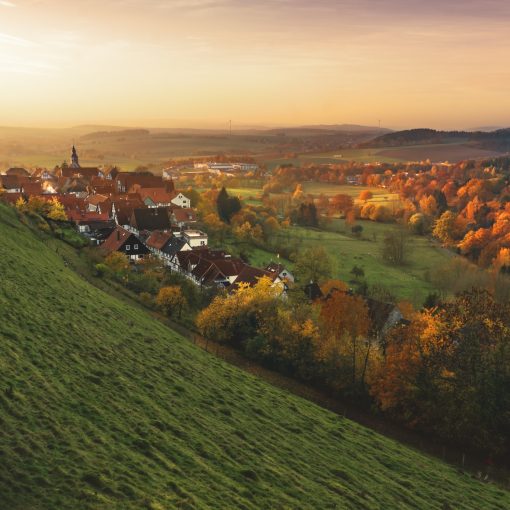As always, you can find a link to this entire series by following this link.
A Collaborative Effort
Credit where credit is due: this entire post, content and actual text, is a collaborative effort with Jenny. In fact this will be the first in a short series of posts where I work together with one of my players to present an aspect of the world that they’ve created, either on their own or in collaboration with me. The next post will be either Grant or Krissi, the post after that will be the other of the two of them, and then finally I’ll have one I do with our anonymous player.
When the group was talking over character creation prior to the start of the game, Jenny asked about playing a raptoran, which is a race I didn’t originally have in the setting. There was no good reason to say “no” however, so I dug my old copy of Races of the Wild out of my closet and did a conversion we agreed on.
But now Eteri needed a place to be from, and since I’ve collaborated with Jenny on the Gallistor twins already (our PCs for a planned collaboration with Min/Max and some other geeky faith folks) I knew we worked well together and played off of each other nicely when it comes to creative pursuits. It was a no-brainer to ask her to design her PC’s homeland with me. She agreed, and this area is the result of our shared effort.
An Unofficial Conversion
Raptorans are a race with mechanics deeply seated in the edition they appeared in, namely 3.5 D&D. I initially didn’t think that would be all that much of a problem and then I opened the book and started looking. 5e races generally fit on a section of page roughly the size of a 3×5 notecard. Just the rules for Raptorans in 3.5 fill up almost an entire page. They don’t have any attribute bonuses or penalties in that edition, and they have some very granular mechanics around their racial flight ability, unique benefits they get when taking spellcasting classes, a special racial weapon (the footbow) that was designed to be used while flying, and so on. I needed to make them fit with standard 5e races, so this is what I came up with:
Raptoran Racial Traits:
+2 WIS, +1 DEX
Walking Speed 30′
Glide speed 30′
Proficiency with the longbow and the ability to use it while flying
Darkvision 60′
Unerring Direction: Always knows which way is North.
In addition, I also created a raptoran-exclusive feat that allows the glide speed to be swapped out for a flight speed and a +1 bonus to DEX. The earliest that could be acquired by a PC is 4th level, which works for me.
The race may not be perfectly-balanced, but Eteri isn’t overpowered in our group and that’s close enough for me.
So Where Do They Live?
Those racial traits lead pretty naturally into the geography of Eteri’s home city of Maghali Da Bina, otherwise known as Highflats. Maghali Da Bina is kind of an odd, two-part city. The lower city, where most of the businesses and institutions are located and also where most of the gnomes that are the other dominant race in Highflats live, is situated right next to a massive mesa that is itself the residential area for the local raptoran population. On days where the weather is nice (and to a lesser extent, ones where it’s not) you can see groups of raptorans gliding to work. Wealthier and/or older raptoran families actually have homes built into the sides of the mesa with private “launching decks” that they can take off from. Getting back up the mesa at the end of the day is accomplished by a number of gnomish cog trains which run on regular schedules and save the raptorans who can only glide, not actually fly a lot of exertion in getting back home at night.
Culturally, this mix of gnomes and raptorans means that there’s a democratic government (an elected council) and that people tend to be very loyal and family-centric. It also means that between raptoran vigilance and gnomish engineering skill, Highflats is a profoundly safe place to live. Guard rails and warning signs are everywhere, workplace safety rules are looked at as a point of pride, and social safety nets are strong. It doesn’t have the warmth of Laraloch-Thistivuel, but anyone who walks into Highflats is shielded from harm in a myriad of interlocking ways that they probably will never even notice. Highflats is one of the smaller Counties – it’s basically a very nice city-state and several miles of surrounding countryside. Geographically, it’s located to the north of the Yuthi desert on some savanna land that abuts the wide and slow-moving Gebadar River.
It should also be noted that in this setting, much of raptoran language is based on or taken directly from Georgian. Jenny decided on this one partly because it’s not a language or culture commonly drawn upon for games, and also partly because many of the sounds made in the language can be mimicked fairly easily by birds, though raptorans do have mouths and voice boxes similar to humans. “Maghali Da Bina” translates to English as “high and flat,” thus the colloquial name “Highflats.” “Eteri” means “air/ether” in Georgian.
Along similar lines, gnomish linguistic culture is a mixture of Czech and English, generally with Czech first names, and last names composed of English word compounds. Because of these features, one can generally tell with the older businesses in town whether they were started by a raptoran family or a gnomish family.
Morality
Pride/Humility: Accepter (0) – People in Highflats are very proud of their society and what it’s accomplished, but that pride usually manifests itself in a strong desire to keep everything working as it should.
Envy/Kindness: Seeker (+1) – The clannishness of the raptorans factors in somewhat here, but at the same time, the cultural focus on safety and the public good means there’s not a lot of unchecked ambition.
Wrath/Patience: Saint (+2) – Justice is dispassionate and very fair. People tend to lean strongly toward restorative justice and reintegrating people back into the community as productive and whole members of society rather than exacting harsh retribution, and the gnomish influence meas people would often rather engineer a fix to a problem rather than punish someone for its existence.
Sloth/Diligence: Saint (+2) – Society in Highflats is a project with the goal of making society as good as it can be, and everyone is expected to play their part. People work hard, take responsibilities seriously, and look out for the public good at significantly higher rates than the world as a whole.
Greed/Charity: Accepter (0) – People in need are taken care of, but it’s often through bureaucratic channels and people don’t always invest much of themselves into it – there’s a strong mindset of “build a good system and trust it to work” and not a lot of “how can I, personally, do some good today?”
Gluttony/Temperance: Seeker (+1) – The pervasive mentality of civic responsibility makes people cautious about waste and excess, and where it exists, it’s often identified and very efficiently channeled to those who could benefit most from the excess.
Lust/Chastity: Seeker (+1) – The focus on strong family bonds tends to make people be serious about their relationships and valuing of their loves ones. Infidelity occurs at a lower-than-usual rate, general culture tends to avoid using sexual themes in order to turn a profit, and so on.
Overall Virtue Score: +7 (Good)
Personality
Duty/Independence: Exemplar: Duty (+2) – Highflats is all about a productive society. It is interwoven into every aspect of life.
Efficiency/Artistry: Indifferent (0) – Indifferent is the wrong word in this case – both are equally (which is to say highly) valued – doing thing right and efficiently is very important to the residents of Highflats.
Meticulousness/Expediency: Favorer: Meticulousness (+1) – The concern with safety and public good tends to make people double-check their work and look for signs of wear and tear in objects, systems, and one another.
Satisfaction/Excitement: Indifferent (0) – Raptorans tend to be more staid, whereas gnomes tend to be balls of enthusiasm. It balances out in sometimes amusing ways.
Tradition/Progress: Exemplar: Progress (-2) – Highflats is in a constant state of trying to do better. New designs are constantly put forth and evaluated, and ingenuity is especially prized.
Sacrifice/Pragmatism: Exemplar: Pragmatism (-2) – Highflats is a very practical place, and if something isn’t working, it’s usually replaced as soon as something that works better can be found. The one exception there, and it’s an important one, is that people are exempt from this, as they’re the entire point of the venture. The dehumanizing aspects of places like Alchova are entirely absent.
Overall Personality Score: -1 (Neutral)
Points of Interest
The Storied Archive: Home of the Pellicane Scribe order (detailed below), The Storied Archive is a massive, multi-level underground library that’s built into the side of and well underneath the mesa. Its archives stretch back much further than the Pellicane Scribes themselves do thanks to their dedication to preserving stories and lore. Due to the vast knowledge contained within, the entire structure is magically warded against fire and flood, and all light in the windowless sub-levels is magical in nature (magic being more reliable even than electricity). Upper levels contain the academy that trains the scribes and hosts cultural functions for the residents of Highflats. In addition to numerous reading rooms, it contains a number of huge lecture halls and a well-appointed theater.
St. Basdav’s Cathedral: The church dedicated to St. Basdav is also located in Highflats. While Basdav himself didn’t live in the area for most of his life, he did spend several years there learning some of the skills that made him such a legendary engineer. Unlike most structures made by gnomes, it’s actually in the upper city, on top of the mesa. The church itself is a relatively small part of a much larger structure used by St. Basdav’s order; in this case, one of the primary focuses of research is optics. The elevated position of the church makes it ideal for the observatory it contains, and a lot of the Basdavites here are astronomers by trade. New lenses are constantly being ground and tried in the massive telescopes in the structure, and decommissioned lenses are sometimes put to surprisingly innovative uses. One of the most prized (and unique) devices made from a collection of these repurposed lenses is Basdav’s Mercy, a massive magical amplification device that greatly boosts the range and potency of healing spells. There have been a number of incidents in the past where the Basdavites have seen some accident happen over a mile away down in the lower city and have remotely healed the affected parties while more conventional help was on the way.
Geladze Motors: The used car business operated and formerly owned by Eteri’s father, Temur Geladze. He established it as a small car lot on the southern edge of town shortly before marrying Eteri’s mother, Tsisia, and it steadily grew over the years to a medium-sized local business. The logo for Geladze Motors is emblazoned on the backs of many a child’s sports uniform, and the business is known for being involved heavily in the sponsorship of community events. Temur and his associates were known for being very fair in their dealings as well, never cheating anyone on a deal. However, Temur recently sold the business to Golden Valley Automotive, a much larger company known for buying up smaller dealerships in the wider region, slowly removing employee benefits, and turning workplaces to toxicity and corruption. It isn’t entirely clear to anyone why Temur made the decision to sell, or if it was entirely his decision at all, but this is what caused Eteri to cut ties with her family, especially her father.
Local People and Organizations of Note
Pellicane Scribes: A long time ago, the area that’s now Highflats wasn’t nearly as good of a place to live. In fact, it was well on its way to becoming a Grim City. That all changed with the arrival of a human bard named Ryan Pellicane. Pellicane was a singularly gifted orator and storyteller, and he also had no time for the corrupt and oppressive nobility that was slowly grinding down the local populace. Almost single-handedly, through the sharing of heroic stories and tales of life in other parts of the world that were nowhere near as bleak, he fomented a revolution that toppled the oppressive nobility, which set in in motion a series of events that culminated in him facing a malevolent force called The Beast of Sorrow that had been manipulating a number of the nobles from the shadows. Sadly, the confrontation ultimately cost him his life, but in his death, he sent forth countless others who would finish what he had started.
The heartbroken populace, already resisting their oppressors in small ways thanks to Pellicane’s influence, rose up and threw off their shackles, slew The Beast of Sorrow, and in the memory of Pellicane, created an order of scribes to carry on his legacy. The monument to Pellicane stands in front of a large stone building (known as The Storied Archive) which houses a massive library where the scribes are trained, and once they are, they travel out into the world to undermine oppression and cruelty wherever it can be found. Pellicane Scribes are normally Bards (College of Lore), but members of the order have also worked directly with the Order of St. Azar, particularly in building schools and preserving the oral traditions of smaller societies in remote areas. Non-bard Pellicane Scribes will always have the Sage background – their training makes them into some of the best researchers in the world. Pellicane Scribes, like the one they’re named after, believe strongly in the power of stories both real and fictional to inspire and create positive change, so new stories are periodically returned to The Storied Archive and from there disseminated to other Pellicane facilities.
A few of the scribes are also stationed at The Palace of the Seers in the Yuthi desert and they may be found in blue, white, or tan robes there. Pellicane scribes can be told apart from the rank-and-file by purple bands on the cuffs, collars, and hems of their robes, or by a purple sash. In addition, they maintain a number of smaller libraries and archives around the world, storing multiple copies of their findings so that nothing will be lost. The symbol of their order is a scroll with a compass where a seal would normally be. Though Pellicane himself was a human, the order is popular with raptorans, who have a strong oral tradition of family history themselves. The Storied Archive has a number of raptorans walking its halls at any given time.
The Maghali Da Bina Safety Engineers Association: A prestigious organization of safety engineers, the MSEA has created seat belts, parachutes, documentation of hazardous substances, spillproof containers, and thousands of other inventions that have saved lives both in Highflats and beyond. Their facility is a large complex in the lower city and they combine mundane and magical protections – a number of new specialized warding techniques (including those that protect The Storied Archive) have been developed by the MSEA’s tireless group of thinkers.
Bedisa Sudilaze: The oldest and most well-respected member of Highflats’s governing council is a sharp-eyed raptoran matriarch whose advanced years have dulled neither her keen mind nor her aerobatic prowess. She flies to and from work in all but the harshest weather and trains younger raptorans in aerial survival. She and her family are deeply plugged into the civics of Highflats, and can be found in all levels of government from teaching to infrastructure repair.
Blessed are those who mourn, for they will be comforted. -Matthew 5:4 (NIV)
A special note: Ryan Pellicane was a real person and also a suicide victim. In the wake of his passing, one of his friends reached out to a large D&D 5e Facebook group, asking people there to help memorialize him. A lot of folks responded and the Pellicane Scribes organization in this blog post is our contribution. Ryan has left a bunch of grieving friends behind, but he and his love of stories will live on in a number of roleplaying campaigns and settings, including this one. While we were definitely willing to help remember Ryan by weaving an organization of benevolent storytellers into the world, we would be much happier if today’s blog post was the last time we had to do something like this. Too many have been claimed by The Beast of Sorrow.
To those who knew Ryan and cared for him, we here at Saving the Game are deeply sorry for your loss. We never knew him, but the world we play in will be richer for his having lived.
To those who may be considering following the same path he did, we implore you: please don’t. Help is available.
If you are in the US and you or someone you know is struggling with suicidal thoughts, please get in touch with The National Suicide Prevention Lifeline.
If you are in Canada, similar resources are available here.




